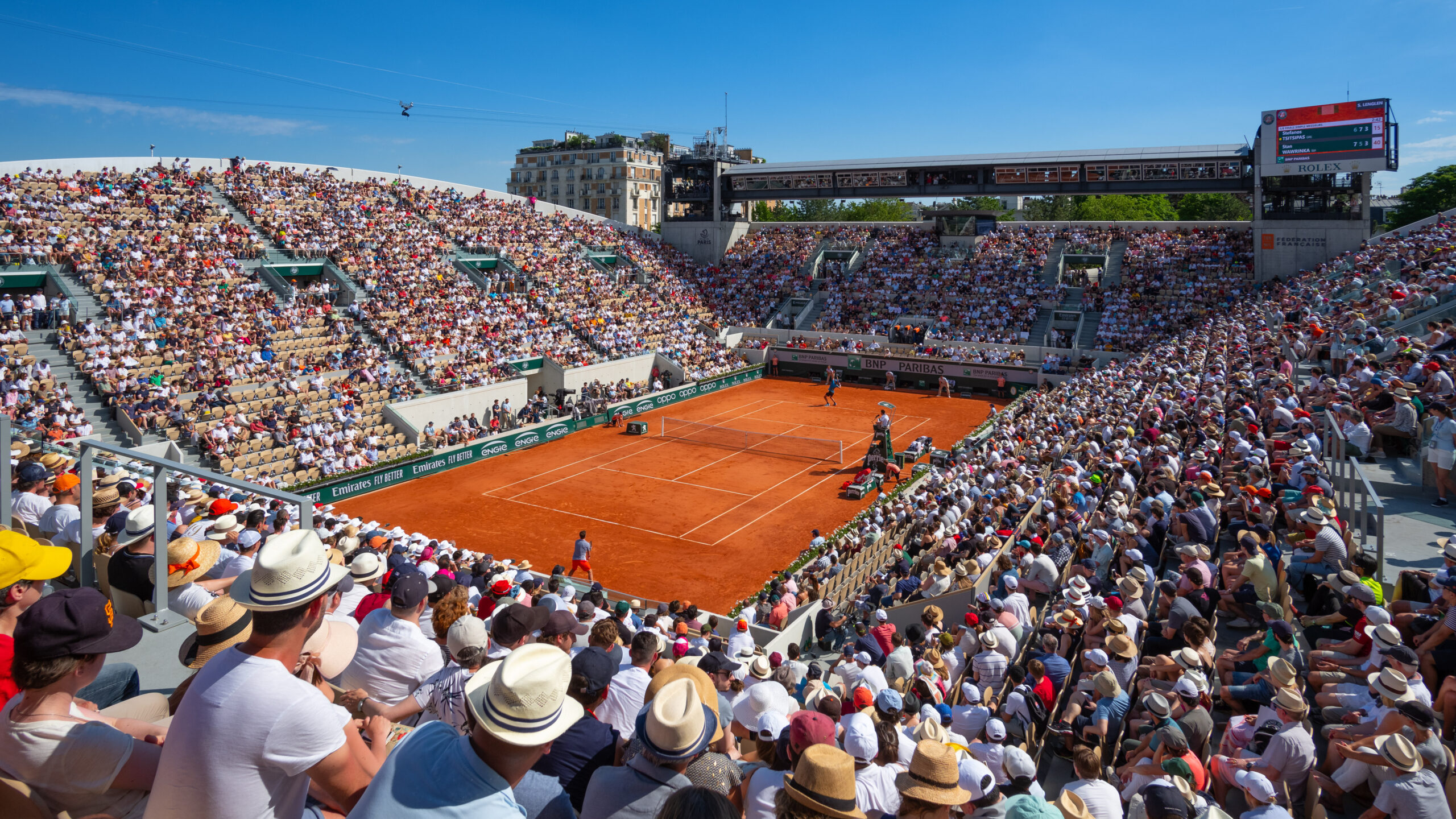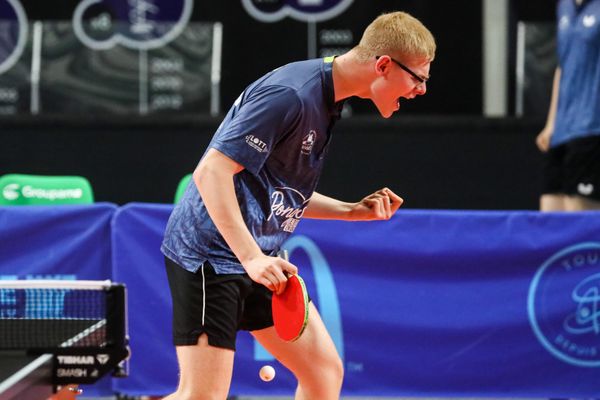“Exploring the World of Tennis in France: A Legacy of Excellence and Passion
Related Articles Exploring the World of Tennis in France: A Legacy of Excellence and Passion
Exploring the World of Tennis in France: A Legacy of Excellence and Passion

France, renowned for its rich history, art, culture, and gastronomy, also boasts a vibrant and deeply rooted tennis tradition. From the hallowed grounds of Roland Garros to the countless local clubs dotting the countryside, tennis is woven into the fabric of French society. This article delves into the multifaceted world of tennis in France, examining its historical evolution, the significance of its major tournaments, the impact of its legendary players, and its enduring cultural influence.
A Historical Overview: From Jeu de Paume to Modern Tennis
The origins of tennis in France can be traced back to the medieval game of jeu de paume (game of the palm), a precursor to modern tennis that was popular among the French aristocracy. Played in enclosed courts, jeu de paume involved hitting a ball with the palm of the hand, and later with gloves or bats. The game flourished in France during the 16th and 17th centuries, with numerous courts built throughout the country, including the famous Salle du Jeu de Paume in Versailles, where a pivotal event in the French Revolution took place.
As lawn tennis emerged in England during the late 19th century, it quickly gained popularity in France as well. The first French tennis clubs were established, and the sport began to attract a wider following. In 1891, the French Championships, now known as Roland Garros, were inaugurated, marking a significant milestone in the development of French tennis.
Roland Garros: The Crown Jewel of French Tennis
Without a doubt, the most iconic and prestigious tennis event in France is the French Open, held annually at the Stade Roland Garros in Paris. As one of the four Grand Slam tournaments, Roland Garros attracts the world’s top players and tennis enthusiasts from around the globe. The tournament is renowned for its unique surface: red clay.
The clay courts of Roland Garros present a distinct challenge to players. The slow, high-bouncing surface favors players with exceptional stamina, patience, and tactical acumen. The clay also allows for more sliding, requiring players to develop specialized footwork and movement skills. Over the years, Roland Garros has witnessed countless memorable matches and has become synonymous with grueling battles and dramatic upsets.
Winning the French Open is considered a crowning achievement in a tennis player’s career. The list of Roland Garros champions includes legendary names such as Björn Borg, Chris Evert, Rafael Nadal, and Serena Williams. These champions have etched their names into tennis history with their remarkable performances on the Parisian clay.
Beyond Roland Garros: A Thriving Tennis Landscape
While Roland Garros undoubtedly holds the spotlight, France boasts a vibrant and diverse tennis landscape beyond its most famous tournament. Numerous other professional and amateur tournaments are held throughout the country, providing opportunities for players of all levels to compete and develop their skills.
The Open Sud de France in Montpellier, the Open 13 Provence in Marseille, and the Moselle Open in Metz are just a few examples of ATP Tour events held in France, attracting top-ranked players and showcasing the country’s passion for tennis. Additionally, France hosts numerous Challenger and Futures tournaments, providing a platform for emerging players to gain valuable experience and ranking points.
At the grassroots level, tennis is widely played and enjoyed by people of all ages and backgrounds. Local tennis clubs are ubiquitous throughout France, offering coaching, facilities, and social opportunities for players to connect and share their love of the game.
Legendary Players: Shaping the History of French Tennis
French tennis has been shaped by the contributions of numerous legendary players who have left an indelible mark on the sport. Suzanne Lenglen, a dominant force in women’s tennis during the 1920s, was the first French player to achieve international stardom. Her grace, athleticism, and flamboyant style captivated audiences and helped popularize the sport.
In the 1980s, Yannick Noah became a national hero when he won the French Open, becoming the first (and so far only) Frenchman in the Open Era to win the title. Noah’s charismatic personality and attacking style of play made him a fan favorite, and his victory at Roland Garros inspired a generation of French tennis players.
More recently, players like Amélie Mauresmo, Marion Bartoli, Jo-Wilfried Tsonga, Richard Gasquet, and Gaël Monfils have achieved success on the international stage, representing France with pride and inspiring young players to pursue their tennis dreams.
The Cultural Impact of Tennis in France
Tennis in France extends beyond the realm of sport; it is deeply intertwined with the country’s culture and identity. The elegance, tradition, and social aspects of tennis resonate with the French appreciation for refinement and sophistication.
The French Open, in particular, has become a cultural event that transcends the sport itself. The tournament attracts celebrities, dignitaries, and fashion icons, creating a unique atmosphere that blends sport, entertainment, and social interaction. The grounds of Roland Garros are transformed into a vibrant hub of activity, with fans enjoying food, drinks, and entertainment alongside the tennis action.
Tennis also plays a role in promoting social cohesion and inclusivity in France. Tennis clubs often serve as community centers, bringing together people from diverse backgrounds and fostering a sense of belonging. Tennis programs are also used to promote education, health, and social development among young people.
Challenges and Opportunities: The Future of French Tennis
Despite its rich history and vibrant tennis culture, French tennis faces certain challenges in the modern era. The dominance of players from other countries in recent years has led to questions about the development of French talent and the competitiveness of French players on the international stage.
However, French tennis is actively addressing these challenges through various initiatives. The French Tennis Federation (FFT) is investing in player development programs, coaching education, and infrastructure improvements to nurture the next generation of French tennis stars. The FFT is also working to promote tennis among young people and underrepresented communities, ensuring that everyone has the opportunity to participate in the sport.
Looking ahead, French tennis has the potential to reclaim its position as a leading force in the sport. With its rich history, passionate fans, and commitment to player development, France is well-positioned to produce future champions and continue to contribute to the global tennis landscape.
In Conclusion
Tennis in France is more than just a sport; it is a cultural phenomenon that reflects the country’s history, values, and aspirations. From the origins of jeu de paume to the grandeur of Roland Garros, tennis has played a significant role in shaping French society. With its legendary players, passionate fans, and commitment to player development, France is poised to continue its legacy of excellence and passion in the world of tennis for generations to come.


